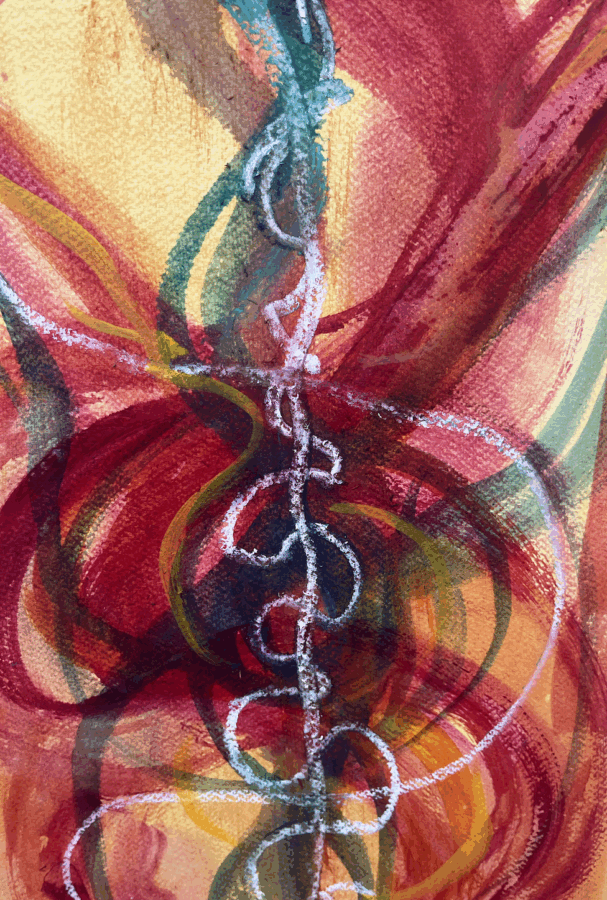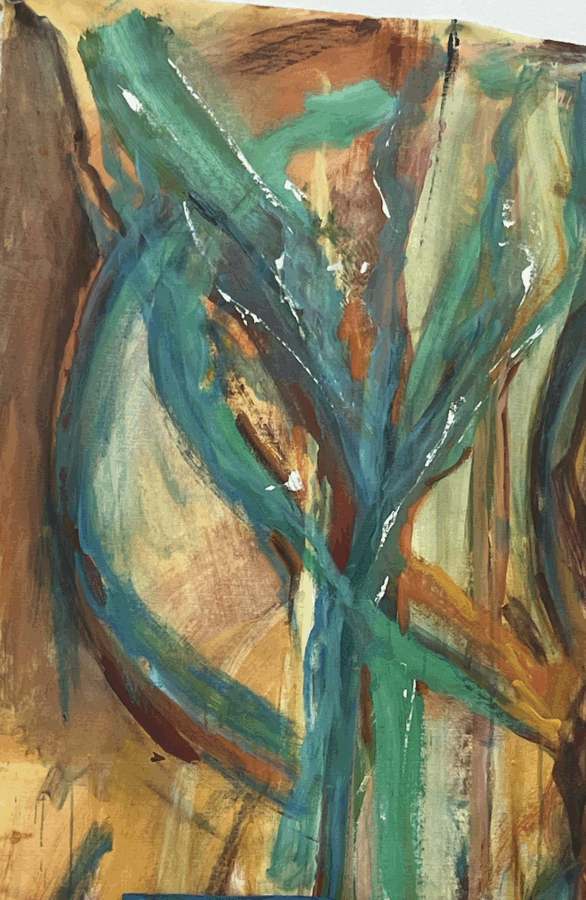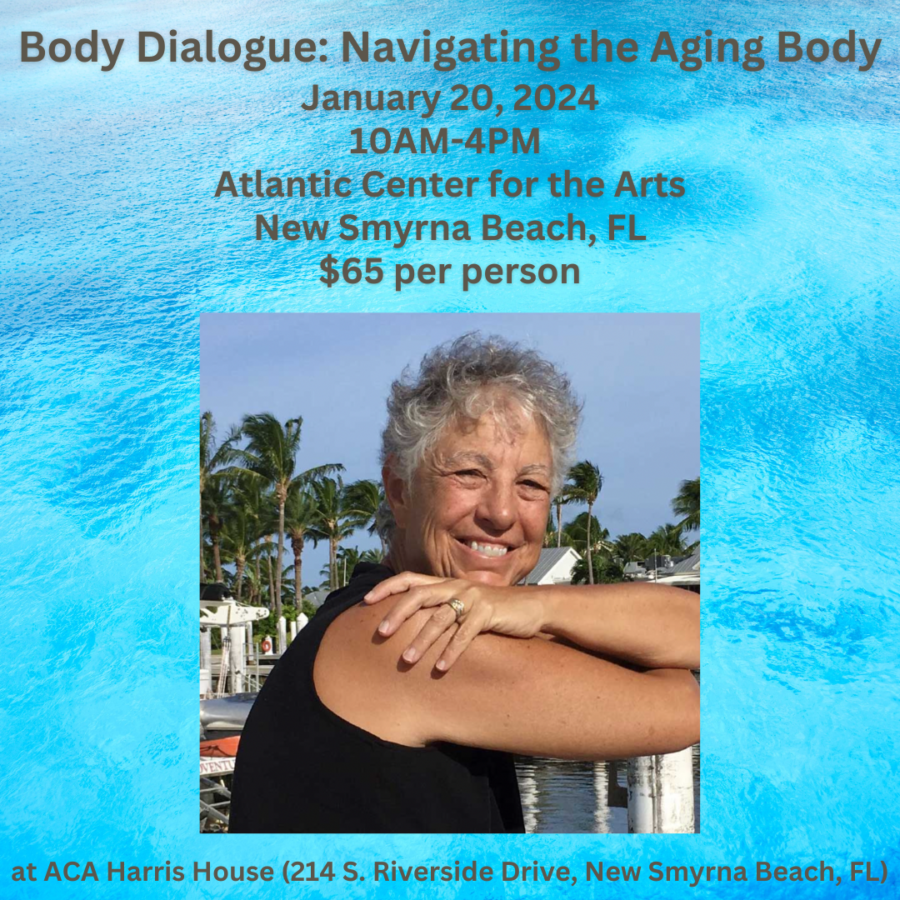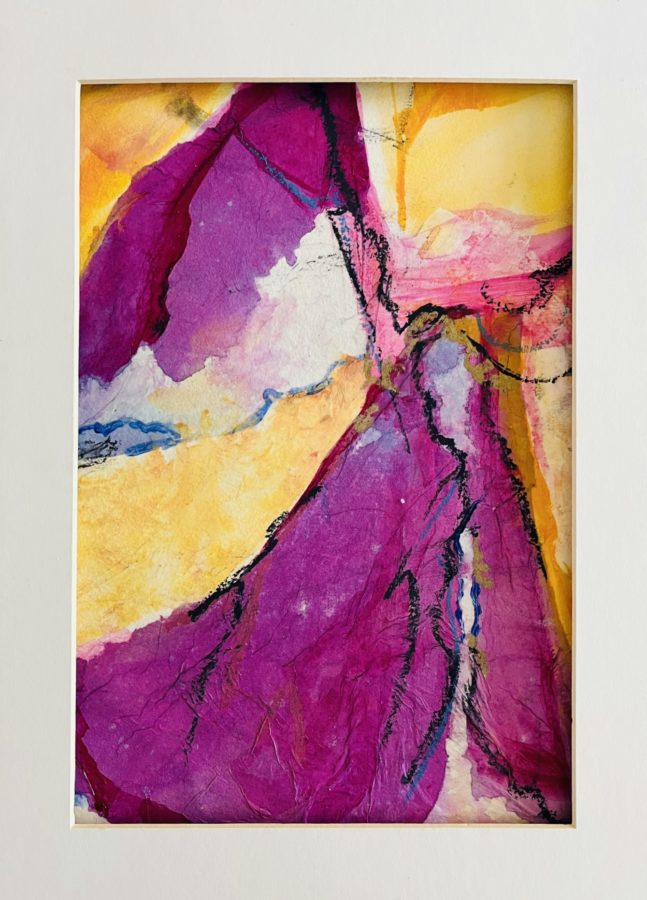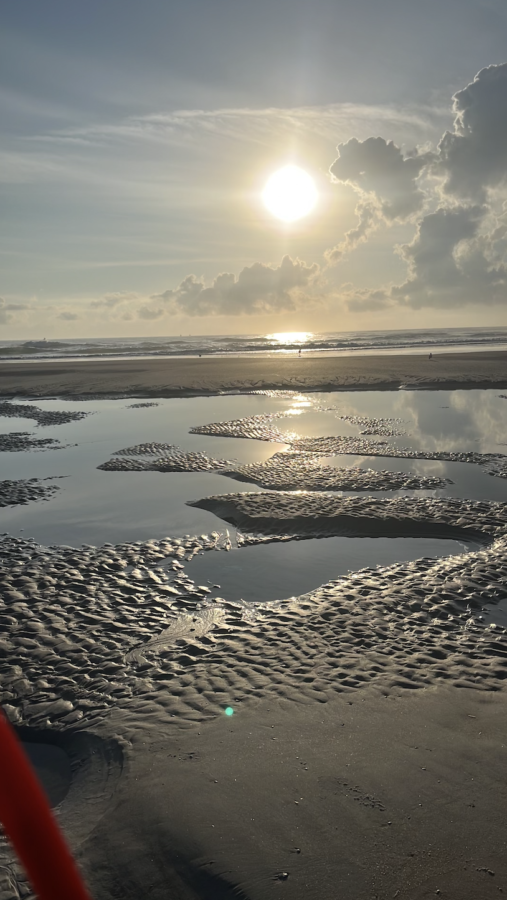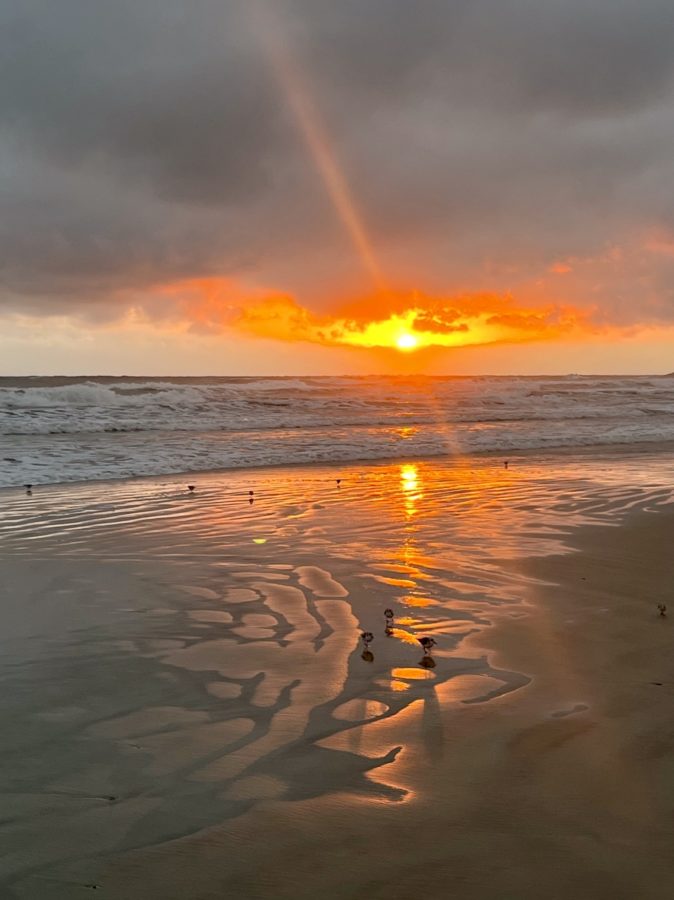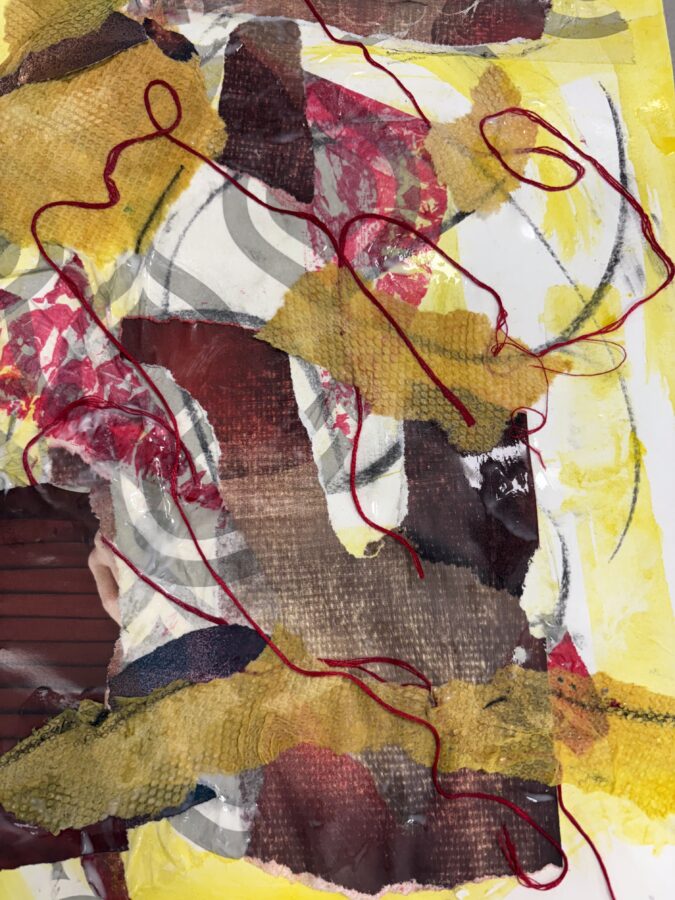
After the October 7th massacre last year, it became clear to me that I was really frightened to travel to Israel to visit family and friends, as I had planned. Despite my fear, I kept making plans and reservations, and then canceling them. I would try to do it again and cancel again. Then I had the airline cancel on me. Finally, I made the trip on June 3, 2025.
Landing in Israel stirred a strange mix of feelings. On the one hand, I was coming home to a place I love so much, but I also found myself facing my fear and my deep, complex ambivalence about being somewhere that holds both so much love and often so much conflict for me. But once I arrived, I met my friends, I had a good cry, and from the moment I released my resistance, I knew I was in the right place at the right time.
To my surprise, a week later, Israel declared war on Iran. There I was, right smack in the middle of a war—the very prospect that had frightened me most. And yet, when I showed up that first night in my friend’s apartment, with her friends, I knew I was there for a reason. It felt like my destiny to be there.
I could tell you about my experience of this trip in so many different ways, but mostly I wanted to focus on the overriding opportunity I felt almost every day I was in Israel.
I am not minimizing the complexity or the ambivalence or the pain of knowing what was going on in Gaza while I was having a deeply meaningful time in Jerusalem, Safed, and Tel Aviv. But just as it is to be an American right now, I felt like my being in Israel—despite my differences with the current government—signified a time to be in solidarity with people I love, each of whom I have a deep and abiding relationship with. So with that said, I want to focus on some of the high points, snapshots, and moments from the visit that I hope will stay with me forever.
First, though, I should note that I experienced the visit from the perspective of having spent the last five years as part of a meditation community. The word that describes my emotional landscape during the trip is heart-opening. With my heart open, I was able to drop into a quality of benevolence. I was able to approach each unfolding minute with expansiveness and breath, as an act of love. Rather than turning to judgment and all the ways in which I was brought up to see things critically, I came to this experience with a desire to open my heart. I came to it wanting to just be present, and witness my friends, family, and grandchildren in their present circumstances.
When I left, what remained with me was a feeling of expansiveness and deep satisfaction for having spent almost six weeks being a part of an extraordinary community of people.
The Israelis I know are all, without exception, creative, resilient, and resourceful people. They exemplify what it means to care about one another and the sense of belonging and intimacy that comes along with that. That sense of belonging was the focus of my experience every day, and it helped me to stay grounded and to stabilize whatever inner turmoil might be arising.
On the evening of June 12, I received a cell-phone message from my partner in America that Israel had bombed Iran. Because of this text, I was prepared in the morning when I woke up to hear an announcement from the government about the bombing, telling us to stay in place and not to travel. Because people make their Shabbat plans in advance, a number of close friends were happy to have an invitation to gather for Shabbat dinner.
Eight of us were together for the meal, and the sirens went off at about 10 p.m. We didn’t have a safe room in the old Arab house (built long before the advent of “safe rooms”) so we gathered in the stairwell, knowing it was a precarious place to be but that it seemed to be the best choice for us while the sirens went off and the bombs were falling all over Israel.
We spontaneously and unanimously started singing a prayer taken from a Rebbe Nachman poem. “Do not be afraid” is the refrain we sang over and over. We all longed for protection, and the prayers surrounded us. We opened our hearts and mouths to voice our mutual desire to stay calm and centered. We let the syllables carry our hope and intention for safety for not just us, but the people around the whole country.
After the war ended, we gathered to celebrate a friend’s 77th birthday. Three of us agreed to get up at six in the morning before it got too hot and travel to a beautiful spring. We walked through a gorgeous deep, dry gorge and arrived at the sparkling, small natural pool.
It didn’t disappoint us when we submerged our bodies. The contrast of it being so cold in the water and so hot in the air was a mirror for our inner experience of being refreshed by the water in this arid landscape. We sang and surrounded our friend with love and blessings for another creative and healthy year. The three of us once again felt the energy and protection of Shekhinah, the great mother, as we encircled one another and the birthday girl. In the midst of the ongoing hostilities in Gaza, we could stop and savor the moment in nature and in friendship.
Perhaps my most surprising and revelatory experience came when my friend Melila invited me to be in a listening circle with 12 Palestinian women from the West Bank and 5 international friends who support the Sulha project, a grassroots organization that works to heal and witness both Israelis’ and Palestinians’ experiences. It has been in existence for over 20 years. When it’s not possible for their groups to meet in person, Sulha gatherings take place on Zoom.
Because it was the tenth day of the war, we were forced to meet on Zoom. In the West Bank and territories, the women gathered in one house since personal computers are scarce, and other women in nearby cities and abroad found their way to a computer.
The Zoom gathering opened with each woman introducing herself, where she lived, what her circumstances are, and her history with Sulha. The atmosphere was one of inclusion and acceptance for each person on the call. The group members knew one another from previous meetings, so there was a sense of trust and appreciation for everyone in the circle.
To sit in a circle with Palestinian women who were trapped in the refugee camps and to feel their love for us and their lack of judgment and criticism overwhelmed me with awe and inspiration. To hear of their circumstances without blame towards us and gratitude for our presence might be the greatest teaching of my trip. The tradition of Sulha is to be present, witness, listen.
During our gathering, I felt the power of showing up without having to explain, apologize, or wallow in my own personal guilt. That stance of precious abiding with one another is something I will carry in me going forward. And it was actually personally transformative. I never could have imagined what it meant to simply SHOW UP and be counted as a compassionate witness.
I had the courage and state of mind to act in that moment because I knew the groundwork had been done and everyone was in agreement to offer our dreams for a better future together.
During my time in Israel, I experienced many more opportunities to feel the open-hearted love and deep sense of connection person to person. Most often, when people in America hear about Israel, they only hear about violence, hatred, and aggression. New reports focus on military actions and failed attempts at reconciliation. I had the great good fortune of being present to kindness, compassion, and community. There are important organizations in the region that want to break the cycle of violence and find ways to meet one another and build trusting community. No one imagines we can get there without huge effort and imagination for a different path to mutual rights and co-existence. I support and continue to learn from these courageous change-makers and leaders, young and old.
Each one of these experiences I mentioned and so many more point in the direction of shared leadership. There are so many people you will never hear about or meet if you only are exposed to the narratives of US vs. THEM. No one has a simple answer, but my personal experience was possible because so many people on both sides want to create a different future than what the political landscape is presenting. I know I am not alone in wishing to create a reality of complexity, nuance, and imagination that allows sovereignty for both people.
This blog is only my attempt to describe my very personal experience of sharing five weeks in my son’s home and with my beloved friends. I want to close it by sharing a special memory. When we were in the safe room at my son’s house during the first days of the war, one of my grandsons asked me if I was scared. He looked at me with his beautiful deep eyes, and my response was YES. He sweetly responded, “Safta, it’s out of our hands.” In that moment, I felt a deep sadness at this resignation, but also realized I will keep praying for a time when we do not feel helpless and without any hope for a different reality.




